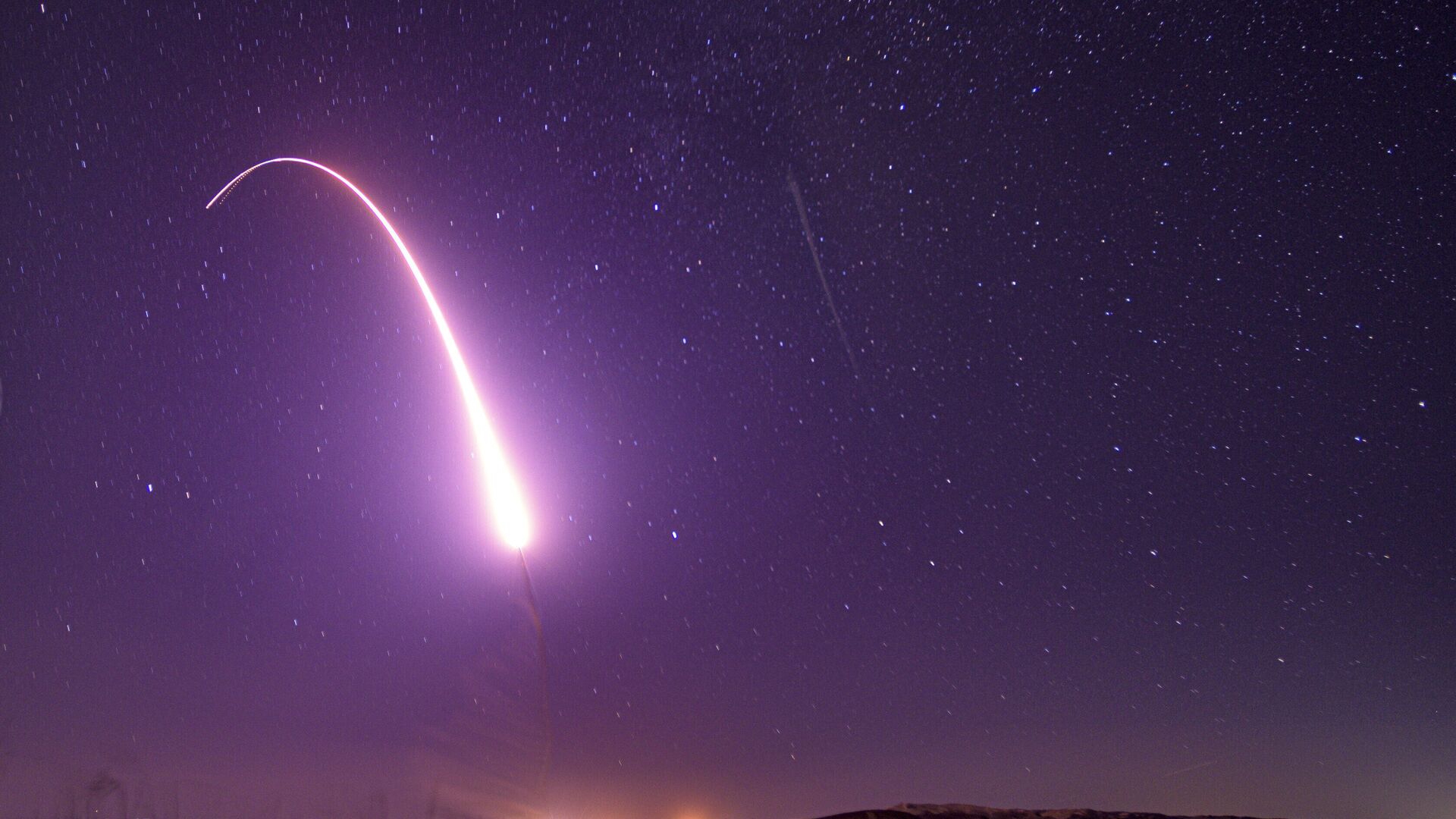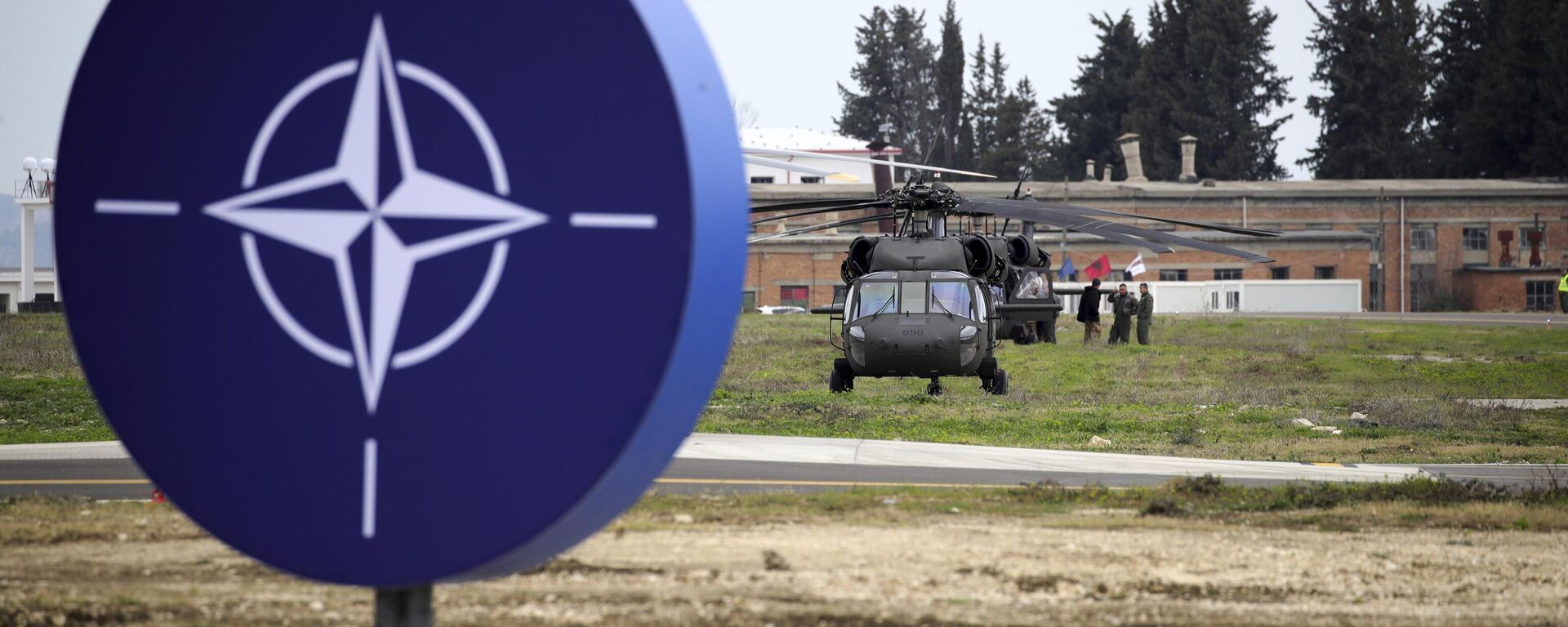https://sputnikglobe.com/20240801/us-considers-expanding-nuclear-arsenal-and-launcher-capacity-1119594297.html
US Considers Expanding Nuclear Arsenal and Launcher Capacity
US Considers Expanding Nuclear Arsenal and Launcher Capacity
Sputnik International
The United States might be forced to reconsider its nuclear size and posture in the absence of a change in the nuclear trajectories of Russia, China and North Korea, Acting US Assistant Secretary of Defense for Space Policy Vipin Narang said on Thursday.
2024-08-01T15:49+0000
2024-08-01T15:49+0000
2024-08-01T15:49+0000
military
us
pentagon
russia
china
north korea
center of strategic and international studies (csis)
us nuclear weapons
strategic nuclear weapons
new start treaty
https://cdn1.img.sputnikglobe.com/img/07e5/01/0b/1081734940_0:0:3071:1728_1920x0_80_0_0_52624392713c4cc48873058c2a6dced0.jpg
"Absent a change in the nuclear trajectories of the PRC [China], Russia and North Korea, we may reach a point where a change in the size or posture of our current deployed forces is necessary," Narang said in remarks during an event hosted by the Center for Strategic and International Studies (CSIS). Narang said that currently there is no needs to grow the US nuclear stockpile but adjustments to the number of deployed capabilities may be necessary if adversaries continue down their path.The United States does not seek an unrestrained nuclear posture as it is in the process of re-evaluating ways to deter its peer adversaries, Narang added.The US is reviewing ways to adjust its nuclear posture, including by increasing future launcher capacity and the number of deployed warheads, the assistant secretary pointed out."We're also reviewing and prioritizing other ways we might adjust US posture. We have begun exploring options to increase future launcher capacity or additional deployed warheads on the land, sea, and air legs that could offer national leadership, increased flexibility if desired and executed," Narang noted.The United States will continue to abide by the limits of the New START for the duration of the treaty as long as it assesses that Russia continues to do the same, the official highlighted.“We will also abide by the central limits of New START for the duration of the treaty as long as we assess that Russia continues to do so,” he said.“We must prepare for a world where constraints on nuclear weapons arsenals disappear entirely,” Narang said. “Modernizing US nuclear capabilities today, preparing for future posture adjustments may help incentivize our adversaries to engage in strategic arms control discussions."Narang however warned that if adversaries continue to chose making the world “less safe,” the US must be prepared to do what it needs to compete and deter aggression against itself and its allies.The Unites States must continue to persuade Russia, China and North Korea that managing nuclear rivalry is better than engaging in unrestrained nuclear competition, Vipin Narang emphasized.However, Narang alleged that the United States' nuclear rivals have chosen the path of competition or of outright conflict over cooperation.
https://sputnikglobe.com/20240718/us-euromissile-deployment-designed-to-line-lockheeds-pockets-quick-before-biden-is-out-of-office-1119423312.html
https://sputnikglobe.com/20240727/13-alliances-of-the-modern-world-who-runs-them-whos-in-them-and-what-do-they-do-1119532007.html
russia
china
north korea
Sputnik International
feedback@sputniknews.com
+74956456601
MIA „Rossiya Segodnya“
2024
Sputnik International
feedback@sputniknews.com
+74956456601
MIA „Rossiya Segodnya“
News
en_EN
Sputnik International
feedback@sputniknews.com
+74956456601
MIA „Rossiya Segodnya“
Sputnik International
feedback@sputniknews.com
+74956456601
MIA „Rossiya Segodnya“
nuclear weapons, what nuclear weapons does russia have, what nuclear weapons does us have, american nukes, russian nukes, nuclear weapons in europe, nuclear weapons around the world, countries with nuclear weapons
nuclear weapons, what nuclear weapons does russia have, what nuclear weapons does us have, american nukes, russian nukes, nuclear weapons in europe, nuclear weapons around the world, countries with nuclear weapons
US Considers Expanding Nuclear Arsenal and Launcher Capacity
WASHINGTON (Sputnik) - The United States might be forced to reconsider its nuclear size and posture in the absence of a change in the nuclear trajectories of Russia, China and North Korea, Acting US Assistant Secretary of Defense for Space Policy Vipin Narang said on Thursday.
"Absent a change in the nuclear trajectories of the PRC [China], Russia and North Korea, we may reach a point where a change in the size or posture of our current deployed forces is necessary," Narang said in remarks during an event hosted by the Center for Strategic and International Studies (CSIS).
Narang said that currently there is no needs to grow the
US nuclear stockpile but adjustments to the number of deployed capabilities may be necessary if adversaries continue down their path.
The United States does not seek an unrestrained nuclear posture as it is in the process of re-evaluating ways to
deter its peer adversaries, Narang added.
"We're not talking about unrestrained [nuclear] posture. We are thinking carefully about what it takes to deter and it is not an unlimited posture," he said.
The US is reviewing ways to adjust its
nuclear posture, including by increasing future launcher capacity and the number of deployed warheads, the assistant secretary pointed out.
"We're also reviewing and prioritizing other ways we might adjust US posture. We have begun exploring options to increase future launcher capacity or additional deployed warheads on the land, sea, and air legs that could offer national leadership, increased flexibility if desired and executed," Narang noted.
The United States will continue to abide by the limits of the New START for the duration of the treaty as long as it assesses that Russia continues to do the same, the official highlighted.
“We will also abide by the central limits of New START for the duration of the treaty as long as we assess that Russia continues to do so,” he said.
The New START treaty between Russia and the United States is set to expire in 2026. Russian Security Council Deputy Chairman Dmitry Medvedev said that extending the treaty is possible only after the United States stops supplying weapons to Ukraine and blocks that country's accession to NATO.
“We must prepare for a world where constraints on nuclear weapons arsenals disappear entirely,” Narang said.
“Modernizing US nuclear capabilities today, preparing for future posture adjustments may help incentivize our adversaries to engage in strategic arms control discussions."
Narang however warned that if adversaries continue to chose making the world “
less safe,” the
US must be prepared to do what it needs to compete and deter aggression against itself and its allies.
The Unites States must continue to persuade Russia, China and North Korea that managing nuclear rivalry is better than engaging in unrestrained nuclear competition, Vipin Narang emphasized.
"Unilateral cuts by the United States are not an effective approach to reducing nuclear risks. We should continue to try to persuade our adversaries [Russia, China, North Korea] that managing rivalry through arms control is preferable to unrestrained nuclear competition," Narang noted.
However, Narang alleged that the
United States' nuclear rivals have chosen the path of competition or of outright conflict over cooperation.




